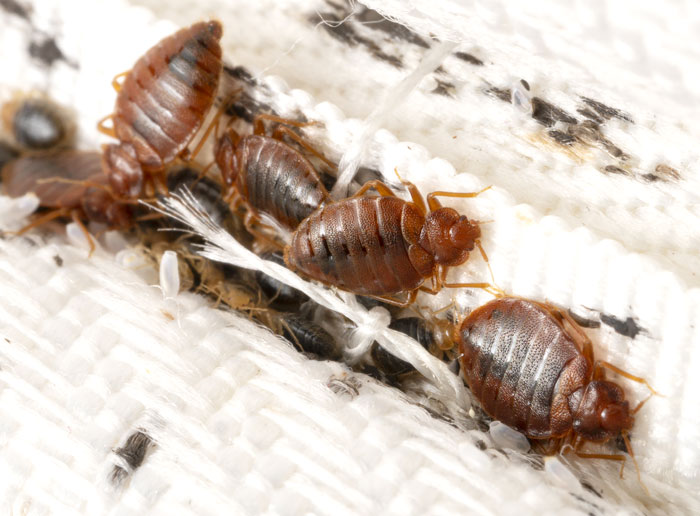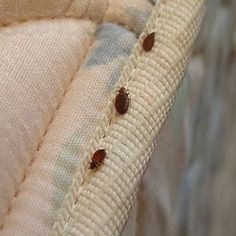Affordable Bed Bug Heat Treatment for Quick and Effective Results
Affordable Bed Bug Heat Treatment for Quick and Effective Results
Blog Article
Obtain Educated About the Types of Insect Control Techniques and Their Benefits for Home Owners
Recognizing the various insect control approaches offered to house owners is vital for efficient insect monitoring. Property owners who are well-informed can make critical selections that not only address bug concerns yet likewise improve the total top quality of their living environment.
Chemical Insect Control Techniques
Chemical insect control approaches are an important part of integrated pest administration strategies for homeowners looking for reliable options to pest infestations. These techniques include the application of chemical substances made to get rid of or discourage bugs that endanger personal effects, health and wellness, and convenience. Common chemicals used consist of insecticides, fungicides, herbicides, and rodenticides, each tailored to target particular pests.
The key benefit of chemical pest control is its rapid performance; many solutions offer instant results, reducing pest populaces substantially in a brief time. Additionally, developments in chemical formulas have brought about items that are much more ecologically friendly and have reduced poisoning degrees for non-target microorganisms when used properly.

Organic Pest Control Methods
All-natural parasite control approaches have gained prominence as home owners look for more secure and much more sustainable options to traditional chemical methods. Biological insect control techniques make use of natural killers, bloodsuckers, or virus to take care of insect populations efficiently. This approach is not just eco-friendly but additionally lessens the threat of harm to non-target varieties, consisting of beneficial pests and wildlife.
One of one of the most typical organic control methods includes introducing all-natural killers right into the setting. For instance, ladybugs can be made use of to control aphid populaces, while nematodes target soil-dwelling pests like grubs. Additionally, parasitoids-- microorganisms that survive on or within a host-- can be employed to regulate particular bug varieties by laying eggs inside them, inevitably resulting in their death.
One more technique is making use of biopesticides, which are stemmed from natural products such as minerals, plants, or bacteria (bed bug exterminator). These products can successfully target insects while posturing minimal risk to pet dogs and people. In general, organic insect control strategies offer homeowners with a reliable ways of bug monitoring that aligns with eco-friendly concepts, advertising a healthier living setting while lowering dependence on artificial chemicals
Mechanical Pest Control Methods
Mechanical pest control strategies incorporate a selection of methods that literally avoid or remove insects without the usage of chemicals. These methods are particularly advantageous for home owners seeking eco pleasant choices while ensuring the safety and security of their space.
One common method is making use of barriers, such as internet, screens, and catches, which prevent insects from entering homes or certain locations. Installing home window screens can efficiently keep insects out, while making use of physical barriers around gardens can deter bigger parasites like rabbits or deer. Additionally, mechanical traps designed for rats can catch and eliminate these parasites without the requirement for poisonous substances.
An additional reliable method entails making use of vacuums and brooms to remove insects straight from surface areas. Normal cleaning and maintenance can considerably minimize insect populaces by eliminating food resources and concealing spots. In addition, using tools like ultrasonic parasite repellents can deter different bugs through acoustic wave that are undesirable to them yet faint to people.
Social Parasite Control Practices
Cultural pest control practices focus on changing the setting and monitoring techniques to develop problems that are much less helpful to pest problems. These methods are fundamental in preserving a well balanced ecological community and decreasing the dependence on chemical interventions. By modifying agricultural methods, house owners can successfully deter parasites while promoting plant health.
One usual technique consists of crop turning, which interferes with the life process of pests by altering the kinds of plants expanded in a certain location (bed bug exterminator). This not only decreases pest populaces however also enhances soil health. Furthermore, intercropping-- planting diverse plants in proximity-- can puzzle pests and reduce their ability to locate their favored host plants
Water monitoring is another vital facet their explanation of cultural techniques. Appropriate watering methods can stop standing water, which serves as a reproduction ground for insects and various other bugs. Keeping cleanliness in and around the home, such as regularly getting rid of debris and food waste, can dramatically reduce bug tourist attraction.
Integrating these cultural techniques right into a thorough insect monitoring approach allows property owners to develop a setting that naturally hinders parasites, therefore boosting the performance of various other control methods while advertising sustainable gardening and landscaping.

Integrated Bug Management Approaches
Integrated Bug Management (IPM) stands for a holistic approach that integrates different methods to properly manage parasite populaces while lessening environmental effect. This methodology incorporates biological, social, physical, and discover this chemical techniques to accomplish lasting pest control. By assessing pest populations and their all-natural enemies, IPM stresses monitoring and determining insects before applying control actions.
Among the core principles of IPM is using thresholds, which develop the level of pest task that requires treatment. This ensures that treatments are applied only when necessary, reducing the reliance on chemical pesticides. Organic control approaches, such as presenting all-natural killers or bloodsuckers, operate in conjunction with cultural methods like crop turning and environment control to interfere with pest life cycles.
In addition, IPM encourages using least-toxic chemical alternatives when treatment is essential, prioritizing products that position very little risk to non-target organisms and the atmosphere. For home owners, taking on IPM approaches not only improves Source the efficiency of pest monitoring however also promotes a much healthier living setting, fostering biodiversity and minimizing chemical direct exposure. Eventually, IPM encourages home owners to make informed choices that stabilize insect control with ecological obligation.
Verdict
In final thought, comprehending the numerous pest control methods equips homeowners to make enlightened choices regarding pest administration. Each technique-- chemical, biological, mechanical, cultural, and incorporated parasite monitoring-- supplies unique benefits that provide to different needs and choices.
Comprehending the different bug control techniques available to homeowners is necessary for reliable pest administration.Chemical bug control methods are a critical part of integrated pest monitoring methods for property owners seeking reliable solutions to pest invasions. On the whole, biological insect control techniques provide house owners with an efficient ways of pest management that straightens with eco-friendly concepts, advertising a much healthier living atmosphere while reducing dependence on artificial chemicals.
Cultural insect control techniques focus on changing the setting and monitoring methods to create conditions that are less favorable to pest problems.In verdict, recognizing the different insect control approaches equips home owners to make educated choices concerning pest monitoring.
Report this page